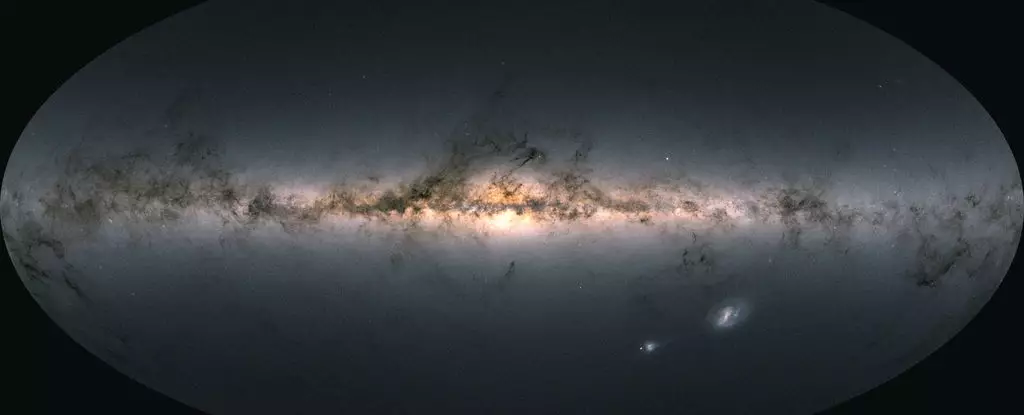The cosmos is a vast expanse filled with mysteries waiting to be uncovered. Among these enigmas, black holes have remained one of the most captivating subjects in astrophysics. Recently, an intriguing possibility has emerged: the detection of a supermassive black hole lurking within the Large Magellanic Cloud (LMC), a dwarf galaxy orbiting our Milky Way. Initial findings suggest this hidden giant might possess a mass around 600,000 times that of the Sun. If confirmed, this discovery could potentially reshape our understanding of black hole formation and evolution.
The Large Magellanic Cloud, currently situated approximately 160,000 light-years from the Milky Way, is engaged in a gradual orbital movement that will lead to a future collision with our galaxy. This interaction is not merely a cosmic spectacle; it holds implications for the fate of both galaxies. As they merge—an event forecasted to occur in around two billion years—the black hole residing in the LMC would likely find itself drawn toward the heart of the Milky Way, eventually combining with Sagittarius A*, the supermassive black hole at our galaxy’s core. This process may help explain how black holes acquire mass over cosmic timescales, transitioning from smaller entities into the colossal structures that dominate galactic centers.
Identifying black holes can be exceptionally challenging due to their inherently invisible nature. They typically do not emit detectable radiation unless they are actively consuming surrounding matter, a process that generates significant light impressions from the heating of material. Therefore, astrophysicists often employ indirect methods to infer their existence. In this case, researchers, led by Jiwon Jesse Han from the Harvard & Smithsonian Center for Astrophysics, explored the movement of hypervelocity stars-sp-shaped anomalies sprinting through the galactic halo at extraordinary speeds.
Using data from the Gaia space telescope, which meticulously recorded the trajectories and velocities of stars across the Milky Way, the team honed in on 21 hypervelocity stars exhibiting characteristics consistent with the Hills mechanism. This mechanism explains how a black hole can exert gravitational influence in a three-body interaction, resulting in the ejection of one star into a high-speed path.
Analyzing stellar motions involves complex extrapolation techniques to decipher their origins. In their study, Han and his colleagues traced the trajectories of these hypervelocity stars back to the potential influences of black holes. From their data, they confirmed that a notable fraction of these stars appeared to emanate from the vicinity of the LMC, implying interaction with an unseen massive object.
Specifically, the analysis indicated that 16 of the hypervelocity stars they studied could be linked to the black hole hypothesis, with a significant number tracing back to the vicinity of the LMC. If validated, this hidden black hole could serve as crucial evidence in understanding the gap between stellar-mass black holes and their supermassive counterparts, offering insights into the modes of growth that facilitate their transformation over time.
The existence of a black hole with a mass just under a million solar masses is particularly thought-provoking, as it lays bare the less-explored territory in the world of black holes. This finding would contribute to a more nuanced understanding of how black holes evolve—bridging the gap between small and massive black holes in the grand narrative of cosmic evolution.
The researchers are determined to build on these findings and conduct follow-up studies to validate the existence of this hidden black hole and characterize its properties further. Such investigations could illuminate the nature of black holes in less studied regions of space, offering a clearer picture of their distribution across the universe.
Cosmic Connections
As we look towards the future, the cosmic dance between the Milky Way and the Large Magellanic Cloud symbolizes more than just an astronomical event; it represents the dynamic and interconnected nature of our universe. Each discovery, from hypervelocity stars to the elusive black holes at their heart, enriches our understanding of the cosmos. While the collision may be billions of years away, the findings generated today will inform our view of the universe and provide foundational knowledge for generations of astronomers to come, revealing the processes that shape the stars and galaxies around us.


Leave a Reply